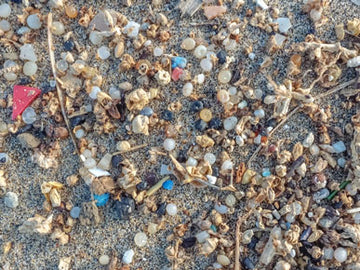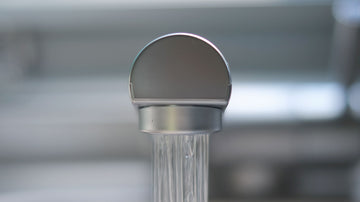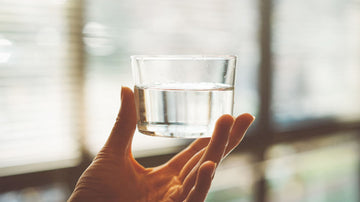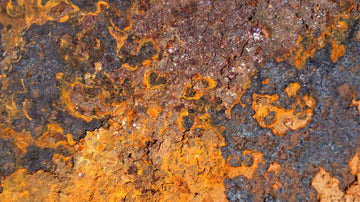
The cause of microplastics
The term microplastics combines a variety of materials that can occur in water in a wide variety of colours, shapes and sizes. Probably the most common basic definition for microplastics is as «Particles smaller than 5 mm» described. The literature references at a size less than 1 micron also like to mention the term «Nanoplastik». Basically, it is divided into two categories. Primary microplastics come directly from our industry and are already the size of microplastics. The primary microplastics include, for example, the fillers, which are often used in shampoos or cosmetics. Abrasives also contain microplastics. Secondary microplastics include plastic that has entered the environment through abrasion or through the release of larger pieces of plastic (e.g. from PET bottles).

How microplastics get into drinking water
Microplastics can be transported through the air and are deposited on our soil with rain. Even if the subsoil corresponds to a filter layer, microplastics make their way through the subsoil into our groundwater. This is shown by measurements from Germany, which examined the groundwater for microplastics. What is certain, however, is that microplastics mainly get into our drinking water via water. Once microplastics are in the water, they tend to accumulate. Depending on its density, it sinks to the bottom of the water or floats.
Water treatment plants filter out microplastics, depending on the construction standard of the socket. Nevertheless, the WHO points to studies that have also been able to detect microplastics in drinking water. It is believed that the switch to plastic components for drinking water installations is also playing its part.
Where ignorance begins
Although the WHO report currently classifies the risk of health damage from microplastics as "low concern", the BUT should definitely be mentioned in the declaration. The report points out that there is an uncertain data situation for particles smaller than 50 micrometers in particular and that no statement should be made on this basis about the health burden.
DrinkPure also filters nanoplastics
True to the motto "a picture says more than a thousand words", we have presented this fact to you as a picture. It shows two plastic spheres with a diameter of 0.5 microns. Like a sieve, the balls are caught by the smaller membrane pores and thus filtered out. Of course, this picture was taken with an electron microscope, because that's the only way we can record these tiny little balls for you. Here is the link to the report about the retention of microplastics

DrinkPure also filters other substances out of the water. Here you can find an overview of what DrinkPure can filter.




